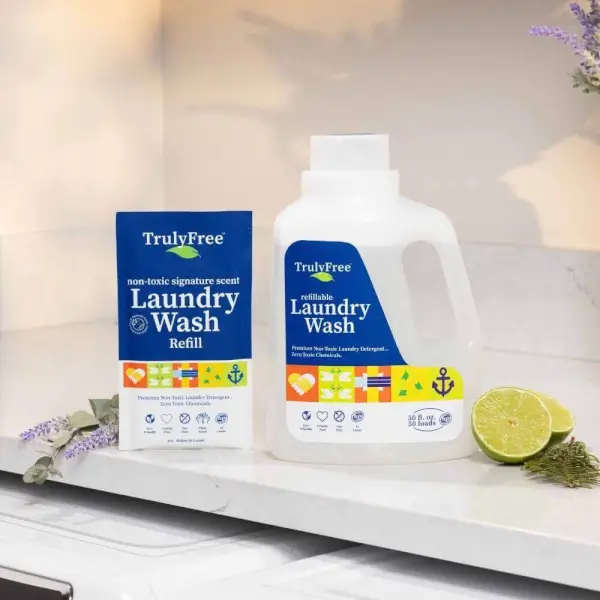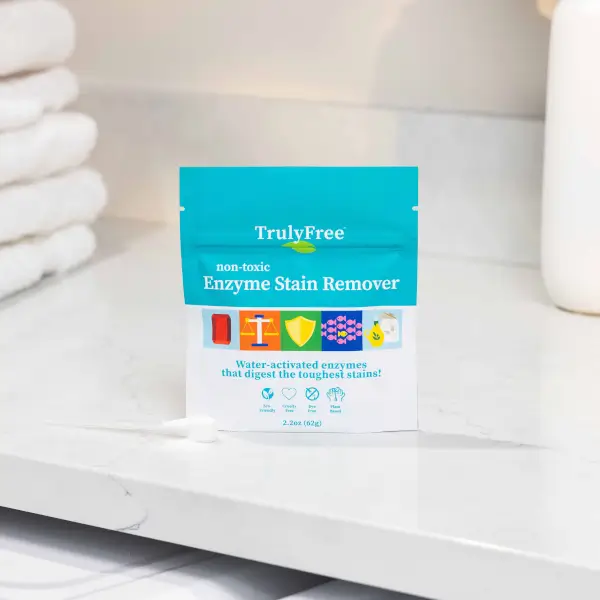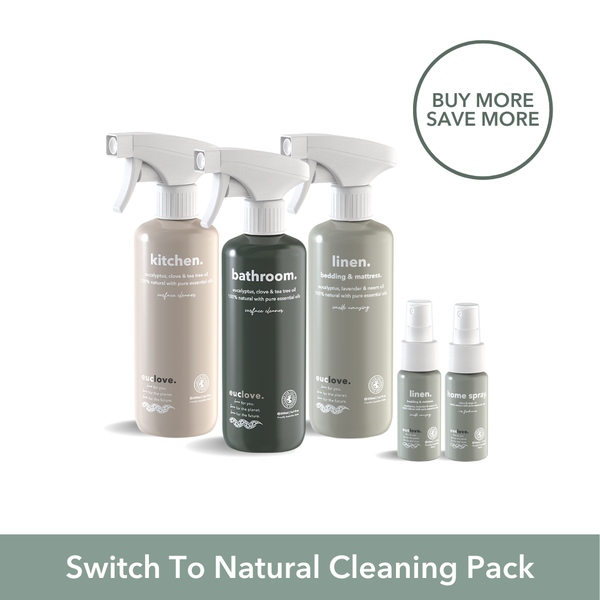Are you ready to make a simple change that can protect your health and your home? Switching to non-toxic cleaning products is easier than you think—and it can make a big difference.
Imagine cleaning your space without worrying about harsh chemicals harming your family or the environment. You’ll discover practical tips to help you make the switch smoothly. Keep reading to find out how you can create a safer, cleaner home starting today.
Why Choose Non Toxic Cleaners
Choosing non toxic cleaners protects your health and the planet. Many traditional cleaning products contain chemicals that harm your body and the environment. Switching to safer alternatives can make your home healthier and reduce pollution.
Health Benefits
Non toxic cleaners reduce exposure to harmful chemicals. They lower risks of allergies, skin irritation, and breathing problems. Safer ingredients protect children and pets too. Using gentle cleaners creates a safer space for everyone.
Environmental Impact
Non toxic products break down faster in nature. They do not pollute water or soil. These cleaners help preserve wildlife and plants. Choosing eco-friendly options supports a cleaner, greener planet.
Common Toxins To Avoid
Avoid cleaners with ammonia, bleach, and phthalates. These chemicals irritate eyes, lungs, and skin. Look for labels that say “free of” harmful substances. Safe alternatives use natural, plant-based ingredients instead.
Identifying Safe Ingredients
Choosing non-toxic cleaning products starts with knowing what is safe. Understanding ingredients helps avoid harmful chemicals. It also guides you to natural, effective options. This section explains how to spot safe ingredients in cleaning products.
Natural Cleaning Agents
Natural cleaning agents come from plants or minerals. Examples include vinegar, baking soda, and lemon juice. These ingredients clean well without harsh chemicals. They are safe for your home and family. Many natural agents also break down quickly in the environment.
Harmful Chemicals To Skip
Avoid products with ammonia, chlorine bleach, and phthalates. These chemicals can cause breathing problems and skin irritation. Some may harm the environment or pets. Parabens and synthetic fragrances often trigger allergies. Knowing these names helps you choose safer products.
Reading Product Labels
Check the label carefully before buying a product. Ingredients are listed from highest to lowest amount. Look for simple, natural names you recognize. Watch for warning words like “toxic” or “irritant.” Labels with clear ingredient lists are usually safer. Take time to read labels and compare products.
Easy Swaps For Everyday Cleaning
Switching to non-toxic cleaning products does not mean a difficult change. Simple swaps can keep your home clean and safe. These alternatives protect your family and the environment. Start with easy changes in daily cleaning routines.
Kitchen Cleaning Alternatives
Use vinegar and water to clean countertops and sinks. Baking soda works well to scrub stubborn stains. Lemon juice helps remove grease and leaves a fresh smell. Choose plant-based dish soaps instead of harsh chemicals. Replace synthetic sponges with natural fiber cloths for better hygiene.
Bathroom Safe Products
Baking soda and water create a gentle paste for tiles and tubs. White vinegar kills germs and removes soap scum effectively. Castile soap is a safe, natural cleaner for sinks and toilets. Avoid bleach and ammonia to reduce harmful fumes. Use microfiber cloths to wipe surfaces without chemicals.
Laundry And Fabric Care
Switch to gentle, plant-based laundry detergents. Use baking soda to boost cleaning power and soften clothes. Vinegar acts as a natural fabric softener and deodorizer. Avoid synthetic fragrances to reduce skin irritation. Wash clothes in cold water to save energy and protect fabrics.

Credit: trulyfreehome.com
Diy Non Toxic Cleaning Recipes
Switching to non toxic cleaning products is easier with simple DIY recipes. These recipes use natural ingredients found at home. They clean effectively without harmful chemicals. Making your own cleaners saves money and reduces waste. Try these easy recipes for a safer home environment.
All-purpose Cleaners
Mix 1 cup of white vinegar with 1 cup of water. Add 10 drops of lemon essential oil for fresh scent. Pour into a spray bottle. Use it on countertops, sinks, and tiles. It removes dirt and kills germs naturally.
Another option is baking soda paste. Mix 3 tablespoons of baking soda with a little water. Use it to scrub stubborn stains and grime. Rinse with water after cleaning.
Glass And Surface Solutions
Combine 2 cups of water, 1/2 cup of white vinegar, and 1/4 cup of rubbing alcohol. Add 1 tablespoon of cornstarch to prevent streaks. Shake well before use. Spray on mirrors and windows, then wipe with a clean cloth.
This solution cleans glass surfaces quickly and leaves them shiny without residue.
Deodorizers And Fresheners
Fill a spray bottle with 1 cup of water and 2 tablespoons of baking soda. Add 15 drops of your favorite essential oil. Shake well before each use. Spray in rooms, carpets, or upholstery to neutralize odors.
For a natural room freshener, simmer a pot of water with citrus peels and cinnamon sticks. Let the scent fill your home for hours.
Tips For A Smooth Transition
Switching to non-toxic cleaning products can feel challenging. A smooth transition helps you avoid waste and frustration. You can keep your home clean and safe at the same time.
Gradual Product Replacement
Start by replacing one product at a time. Use up the old cleaning supplies before buying new ones. This method reduces waste and saves money. It also gives you time to find the best non-toxic options that work for your home.
Testing New Cleaners Safely
Try new products on small, hidden areas first. Watch for any damage or bad smells. This prevents harm to surfaces and keeps your home fresh. If a product causes problems, try a different brand or formula.
Involving Household Members
Tell everyone in your home about the change. Share why non-toxic products matter for health and the environment. Ask for their help in using and storing the new cleaners. Teamwork makes the switch easier and more effective.
Where To Buy Non Toxic Products
Finding the right places to buy non toxic cleaning products is key to making a safe switch. These products keep your home clean without harmful chemicals. Many options exist, both nearby and online. Choosing the best place depends on your needs, budget, and convenience.
Local Stores And Markets
Local stores often have a selection of non toxic cleaning products. Health food stores and organic markets are good spots. Many grocery stores now stock safer brands too. Visiting these stores lets you see and smell products before buying. Staff can offer advice on the best choices.
Online Shopping Options
Online shops provide a wide range of non toxic products. Websites specialize in eco-friendly and chemical-free cleaners. Shopping online offers detailed product information and customer reviews. You can compare prices easily and find rare brands. Delivery comes straight to your door, saving time.
Budget-friendly Choices
Non toxic cleaning does not have to be expensive. Many affordable brands offer effective products. Look for store brands or simple ingredient lists. Making your own cleaners with vinegar and baking soda is another cheap option. Small changes add up to safer, cleaner homes without high costs.
Maintaining A Clean, Safe Home
Maintaining a clean, safe home is essential for health and comfort. Using non-toxic cleaning products helps protect your family from harmful chemicals. It also keeps your indoor air fresh and reduces allergy risks. Clean spaces feel welcoming and support good well-being.
Switching to safer products requires good habits and smart storage. Small changes make a big difference over time. Learn simple steps to keep your home clean, safe, and green.
Regular Cleaning Habits
Clean your home often to avoid dirt buildup. Use non-toxic cleaners on surfaces like floors, counters, and bathrooms. Wipe spills quickly to prevent stains and germs. Focus on high-touch areas such as doorknobs and switches. Keep cleaning tools like cloths and mops clean too. Routine cleaning helps maintain a healthy home environment.
Storage And Handling Tips
Store non-toxic products in cool, dry places away from children. Use original containers with clear labels to avoid confusion. Avoid mixing different cleaners, even if they are non-toxic. Wear gloves if you have sensitive skin. Dispose of empty containers safely according to local rules. Proper storage and handling keep your home safe and organized.
Encouraging Sustainable Practices
Choose reusable cleaning tools instead of disposable ones. Use water and vinegar or baking soda for simple cleaning tasks. Buy products with biodegradable ingredients and minimal packaging. Support brands that use eco-friendly methods. Teach family members about the benefits of non-toxic cleaning. Small habits help protect the planet while keeping your home clean.

Credit: trulyfreehome.com

Credit: www.euclove.com.au
Frequently Asked Questions
What Are Non-toxic Cleaning Products?
Non-toxic cleaning products are made from natural ingredients. They avoid harmful chemicals like ammonia and bleach. These products are safe for your health and the environment. They reduce allergic reactions and indoor pollution. Switching helps create a healthier home atmosphere.
How Do I Identify Non-toxic Cleaners?
Look for labels stating “non-toxic,” “biodegradable,” or “plant-based. ” Avoid products with synthetic fragrances, dyes, or harsh chemicals. Check ingredient lists for natural substances like vinegar, baking soda, and essential oils. Certifications such as EPA Safer Choice can also guide your choice.
Are Non-toxic Cleaners As Effective As Traditional Ones?
Yes, many non-toxic cleaners perform equally well. Ingredients like vinegar and baking soda effectively remove dirt and grime. Some products combine natural agents for powerful cleaning. Effectiveness depends on the surface and dirt type. Test products on small areas first.
Can I Make My Own Non-toxic Cleaning Products?
Absolutely! Simple recipes use household items like lemon, vinegar, and baking soda. Homemade cleaners are cost-effective and customizable. They avoid chemicals and reduce waste. Just ensure to store mixtures safely and label them clearly for household use.
Conclusion
Switching to non-toxic cleaning products helps protect your health and home. These products reduce harmful chemicals in your space. Making the change is easy with small steps. Start by checking labels and choosing safer options. Over time, your family and pets will benefit.
Cleaner air and surfaces create a healthier environment. You can save money by using natural ingredients too. Stay patient and consistent during the switch. Your effort makes a positive impact on your life. Embrace safer cleaning for a fresher, safer home today.
